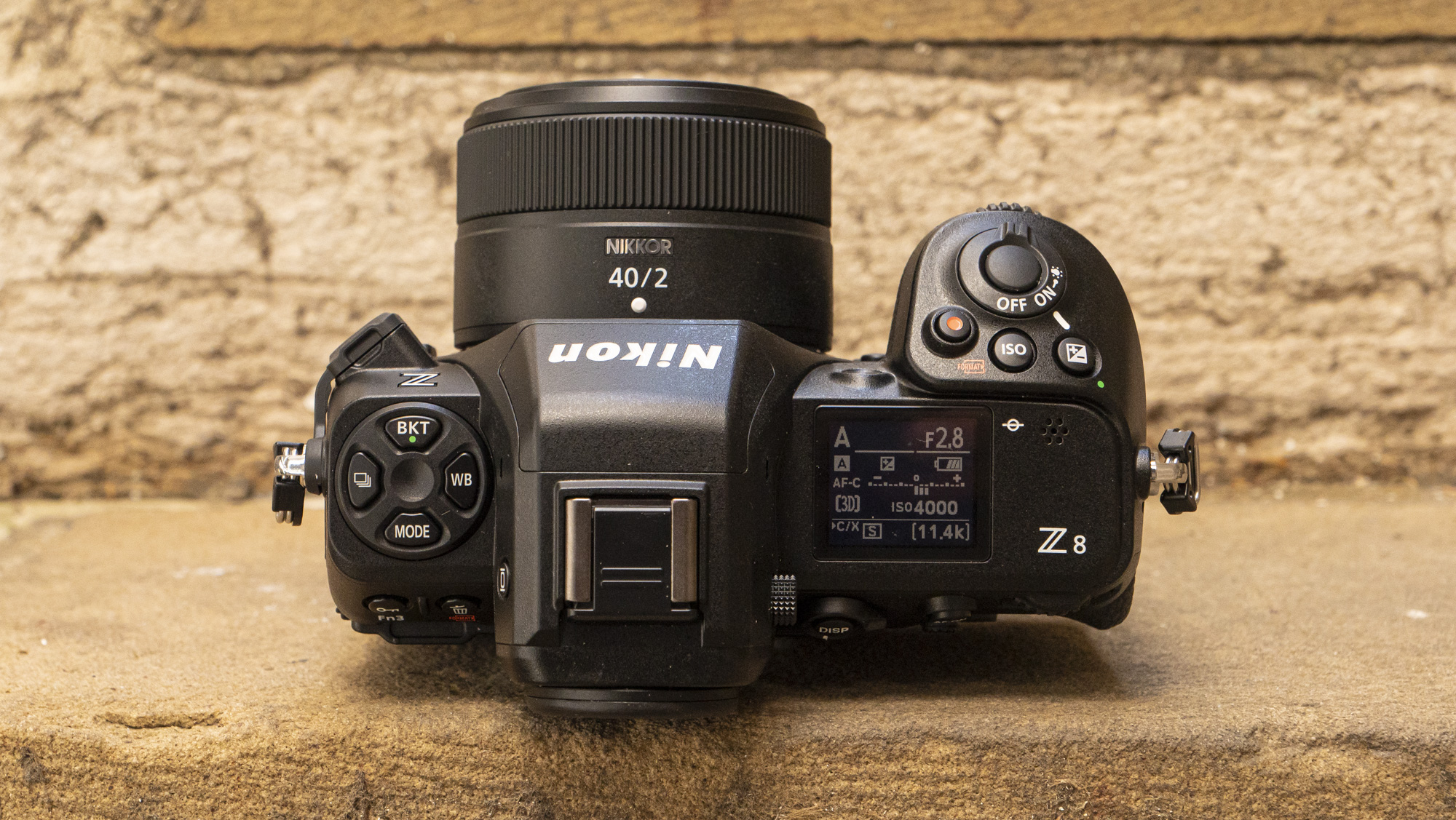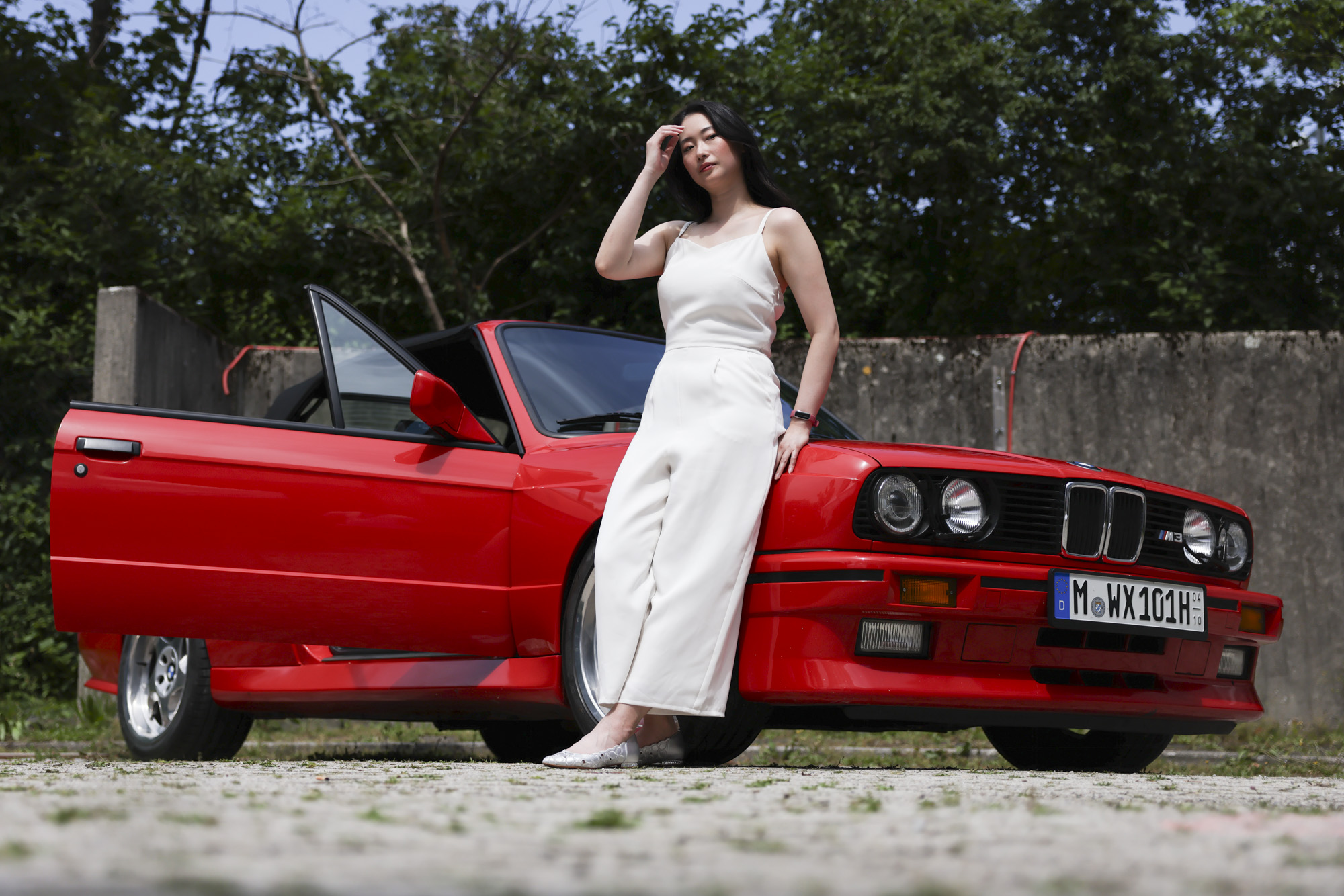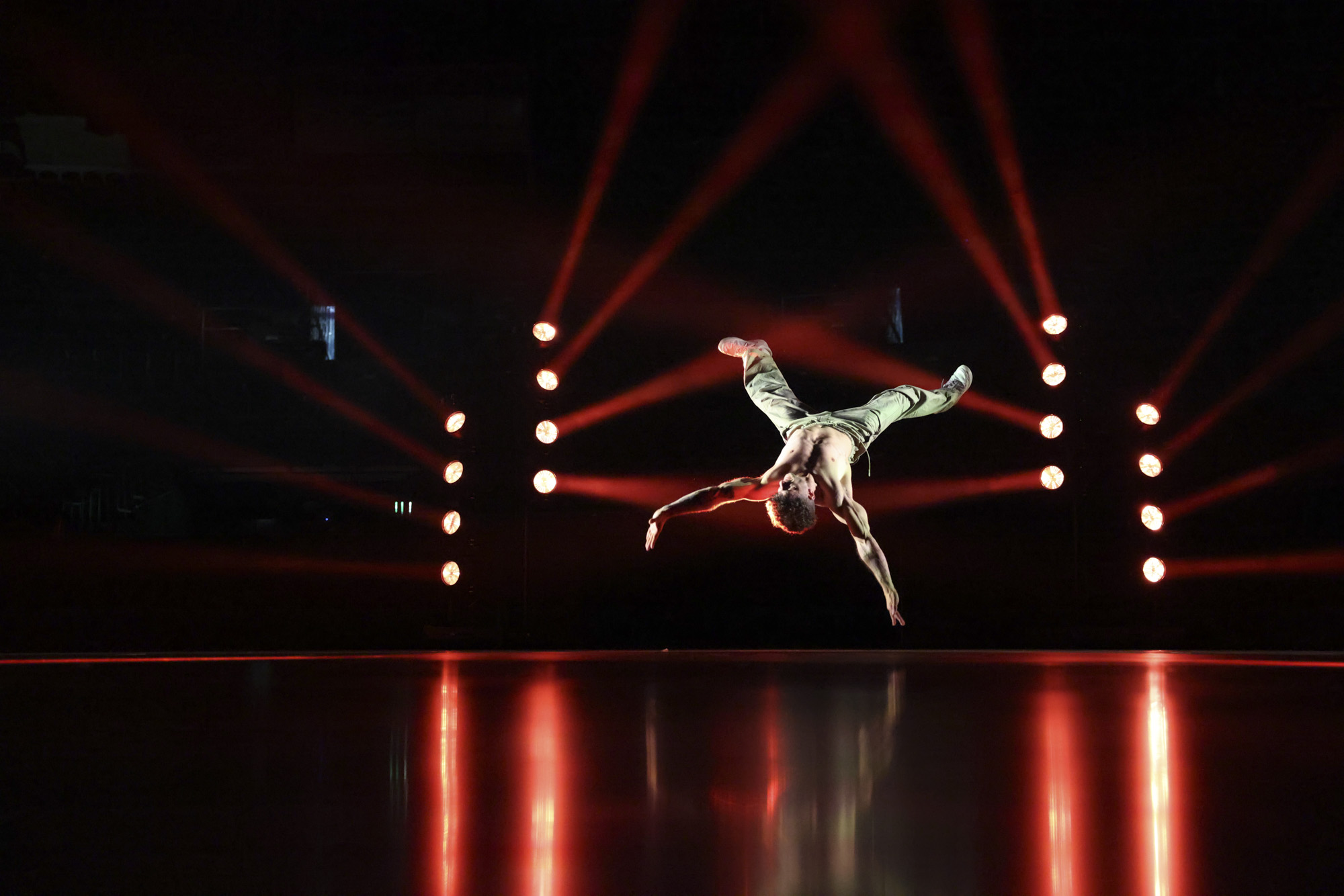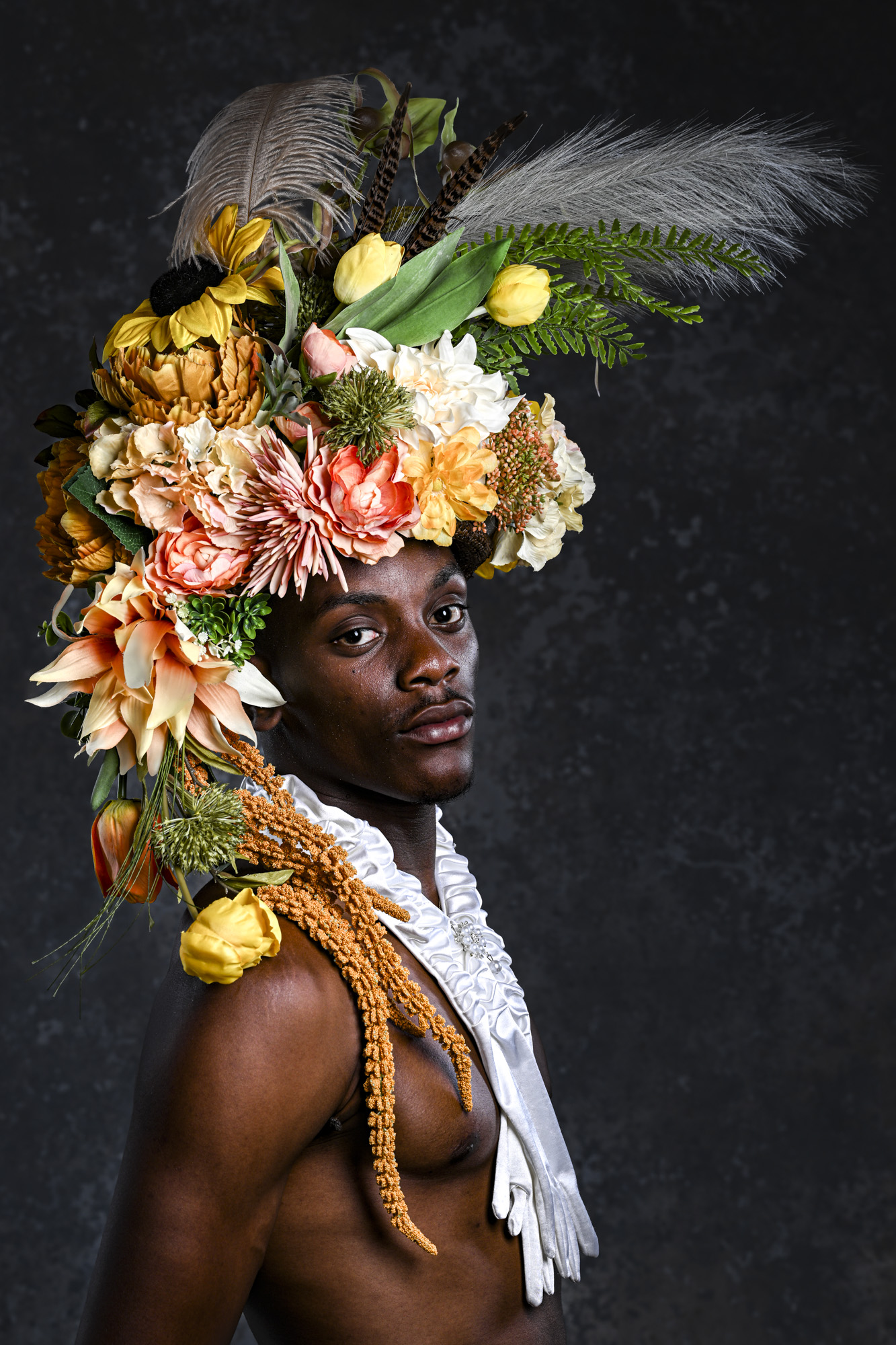
Exemplar mirrorless camera offering 45 megapixel stills while being the first in its series to boast 8K-video capture
For
- 45MP stills and 8K 60p video capture
- Solid image stabilization system
- In-camera AI editing
Against
- Expensive against current rivals
- No open gate video
The true successor to the D850 DSLR: the baby Z9 is like a supercharged Z7 II and it has come down in price.
For
- 45MP stills and 8K 60p video capture
- 3.2in vari-angle screen
- Decent value
Against
- Less battery life than the EOS R5 Mark II
- Bigger than its rivals
The Canon EOS R5 II and Nikon Z8 are arch rivals, both being high-end full-frame cameras, released a little more than a year apart.
Their rough concepts are similar. These are high performance cameras, but they look more approachable than their pro-style siblings with vertical battery grips baked into the design: the Nikon Z9 and Canon EOS R1. However, the Nikon Z8 and Canon EOS R5 II also get you similar performance and image quality to those cameras, for a significant chunk of change less.
Which of these cameras is better? Each excels in a few areas, but you can see the benefits of the Canon EOS R5 II arriving a year and three months later. Its most useful improvements are all about its autofocus system, which proves next-gen software intelligence (yes, call it AI if you like) isn’t just about generating students’ essays and dodgy looking digital art.

Canon EOS R5 Mark II vs Nikon Z8: price and availability
- Canon EOS R5 II: $4,299 / £4,499 / AU$6,699 or $5,699 / £5,799.99 / AU$8,549 with kit lens, launched in August 2024
- Nikon Z8: $3,999 / £3,999 / AU$6,999, launched in May 2023
In most countries, the Canon EOS R5 II is more expensive than the Nikon Z8. Blame inflation. Blame Canon’s confidence it has something special on its hands.
Either way, you can save a few hundred of your country’s currency with Nikon, although the list price of the Canon is actually a little lower than the Nikon in Australia.
The Nikon Z8 arrived quite a while before the Canon. It was announced in May 2023, and went on sale towards the end of that month.
Canon unveiled the EOS R5 II in July 2024, with an in-store date of August 2024. Cameras don’t age as quickly as smartphones or laptops, but a year and change of additional time has given Canon a clear upper hand here.








Canon EOS R5 Mark II vs Nikon Z8: design and handling
- Canon EOS R5 II: 138.5×101.2×93.5 mm, 1.45lb / 656g (1.65lb / 746g with battery), 5.76m-dot (1600 x 1200 pixels) EVF
- Nikon Z8: 144 x 119 x 83 mm, 2lb / 910g, 3.69m-dot EVF (1280 x 960 pixels) blackout-free EVF
The Canon EOS R5 II is a little smaller, and significantly lighter, than the Nikon Z8. It’s a handful of millimetres narrower, the better part of 20mm shorter. And the 164g weight difference is quite stark. It’s more than the weight of Canon’s RF 28mm F2.8 STM pancake lens, for example.
Most of the additional height is down to Nikon's characteristic EVF bump, of course. And the Canon EOS R5 II body is a little thicker than the Nikon’s.
Coming from different manufacturers, these cameras ascribe to somewhat different ergonomic and control placement conventions. But there are some important bits to note.
They both have a monochrome top display to relay basic settings information. The Canon EOS R5 II has a more flexible screen, though.
It’s fully articulated, while the Nikon Z8 uses a multi-hinged design. Nikon’s style is often faster to use, but doesn’t have the video-friendly flexibility of Canon’s fully articulated design. I’ll leave you to decide which is better for your style of shooting.
The EVF specs are less a case of opinions clashing. On paper the Canon EOS R5 II’s electronic viewfinder is simply better.
It has resolution of 5.76 million dots, equivalent to 1600 x 1200 pixels. The Nikon Z8 has a 3.69-million-dot EVF, equivalent to 1280 x 960 pixels.
They’re both 0.5-inch panels, are blackout-free and have a refresh rate of 120Hz. Magnification is slightly higher on the Nikon, at 0.8x to 0.76x. But it looks like an obvious win for Canon. We’re fans of the zero-lag view of the Nikon Z8, though. We’ll check out whether the EOS R5 Mark II matches that aspect too in our full review.
Canon EOS R5 Mark II vs Nikon Z8: sensor and image quality
- Canon EOS R5 II: 45MP full-frame, 8K video up to 60fps, reduced rolling shutter distortion
- Nikon Z8: 45.7MP full-frame, 8K video up to 60fps, virtually no rolling shutter distortion
These cameras sensors are in the same ballpark. They are full-frame chips with resolution in the 45MP range. A stacked design also reduces the impact of the rolling shutter effect in both.
There’s not too much to separate these two in pure technical terms, although their ISO ranges are a little different. The Nikon Z8 has a lower base ISO. It’s 64, which can be expanded down to 32. Canon opts for 100, which can be pulled down to 50 in the expanded mode.
Are these true like-for-like comparisons, though? Scientific as they may sound, these aren’t really standardised numbers. We’ll be taking a closer look at this in our full Canon EOS R5 II review.
Given the closeness of the sensor hardware, debates on pure image quality are more likely to boil down to endless conversations about the merits of Canon and Nikon colour character on Reddit.
They are pretty evenly matched for video modes too. Each can shoot at up to 8K resolution, at 60 frames per second when using RAW shooting. This makes handling the files more of a trial, but most of the time you’ll want to use 4K shooting anyway – this can reach up to 120fps.
The Canon R5 II can also hit 240fps at Full HD, where the Nikon maxes-out at 120fps. Neither camera has an open gate shooting mode, though. This is where entire sensor’s image data is captured, not just a widescreen window. But they both have a full-size HDMI port too, a neat usability win.
Canon EOS R5 Mark II sample images





Nikon Z8 sample images





Canon EOS R5 Mark II vs Nikon Z8: autofocus and performance
- Canon EOS R5 Mark II: Dual pixel Intelligent AF, 30fps RAW, 30fps JPEG. 12fps mechanical, pre-record, Eye Control AF
- Nikon Z8: 20fps RAW, 30fps JPEG, no mechanical mode
The Canon EOS R5 II is a better pure speed performer than the Nikon Z8. It can shoot at up to 30fps even when shooting RAW+JPEG images. Want the classic feel of a mechanical shutter? That tops out at a respectable 12fps.
Nikon’s Z8 can reach 20fps when shooting RAW files, and only hits 30fps when capturing JPEGs alone. Similarly, while both have a pre-burst mode, where shots are captured upon a half shutter button depress, it’s only available for JPEG shooting in the Nikon. For pure speed, Canon wins.
However, the buffer on the Canon is a little conservative. It’s rated for 93 RAW captures, compared to more than 1000 for the Nikon Z8. Sure, an extra 10fps piles on the pressure for throughput and the sheer amount of data generated. But it’s clear Canon wants to leave a clear gap between the R5 II and the Canon EOS R1, which can shoot at up to 40fps for 1000+ frames.
There’s a balance here that may look rather different depending on your needs, but I do think Canon has the edge on autofocus. As noted in our previous feature on the Nikon Z8, the camera doesn’t quite have the focusing intelligence of the original EOS R5 in some situations, let alone its successor. And Canon itself told us autofocus is the biggest upgrade in this generation.
And it effectively comes down to AI smarts, a topic discussed in just about almost every area of tech at the moment.
The benefits are quite specific and tailored here, though. Eye Control AF looks where your eye is pointed when using the EVF, to focus on whatever you’re checking out. This is a type of feature usually associated with virtual reality rather than cameras.
The Canon EOS R5 II will also be able to recognise up to 10 specific people, in a next-generation take on face detection. This can be handy for shoots when you want the autofocus to favour a particular person among a crowd. Wedding photographers, take note.

Nikon’s Z8 is no slouch, of course, and it claims to be able to focus in lower light, in -7.5EV to the Canon’s -6.5EV. But it does seem Canon has the edge for autofocus intelligence at present.
This focus on software smarts is seen in how Canon and Nikon approach high-resolution shooting too. These cameras max capture modes aren’t entirely limited by their sensor resolution. The Nikona Z8 and EOS R5 II can shoot up to 180 megapixel images, using clever trickery.
Nikon uses a sensor shift technique, where the OIS motor is used to move the camera sensor fractionally between exposures, which are then merged. Canon now uses AI upscaling.
Which is better? The AI approach is far more convenient, as the sensor-shift style uses multiple successive captures, demanding the camera is held very still during shooting thanks to the precise, fractional movements involved. However, AI upscaling can often look, well, just what is it — a process that involves digitally confecting additional image information.
Canon EOS R5 Mark II vs Nikon Z8: battery life and additional features
- Canon EOS R5 II: 630 shots (LCD) 340 shots (viewfinder), 15.2Wh
- Nikon Z8: 340 shots (LCD), 330 shots (viewfinder) (CIPA), 16Wh battery
Canon claims another advantage in the EOS R5 II’s in-body image stabilisation. It’s rated at up to 8.5 stops of effectiveness, radically improving what you can get away with when shooting handheld. The Nikon Z8’s IBIS is worth around five stops of effectiveness. And it wouldn’t often come off too well in direct comparison with the original EOS R5’s IBIS.
Battery life is more of an eyebrow-raiser. These two cameras have batteries of similar capacity. The Nikon’s is 16Wh, the Canon’s 15.2Wh. But where the max CIPA rating, using the LCD screen, of the Canon EOS R5 II is 630 shots, it’s just 340 shots for the Nikon Z8.
We’ll be looking at this closer in our full Canon EOS R5 II review. But with use of the EVF rather than the LCD screen, the big disparity disappears. The Canon ROS R5 II is rated for 340 shots, to the 330 of the Nikon Z8.
What else is there to note? The Nikon Z8 doesn’t have a mechanical shutter, as Nikon thinks it’s a thing of the past. However, it can expose shots for up to 900 seconds, where the Nikon Z8 taps out at 30 seconds.

Which one should I buy?
These cameras are evenly matched enough not to make someone deeply rooted in the Nikon or Canon lens system consider switching sides, for most folks at least.
They can shoot video at up to 8K 60fps, have similar resolution sensors. And while the Canon has faster RAW burst shooting, the Nikon Z8 hits back with a much longer-lasting burst buffer.
If you’re not yet shacked up with a lens system, though, the Canon EOS R5 II takes the win. It has more advanced autofocus, it’s significantly lighter and has a significantly higher-resolution EVF. Based on our experiences, the smarter AF may well be worth the added cost alone.







